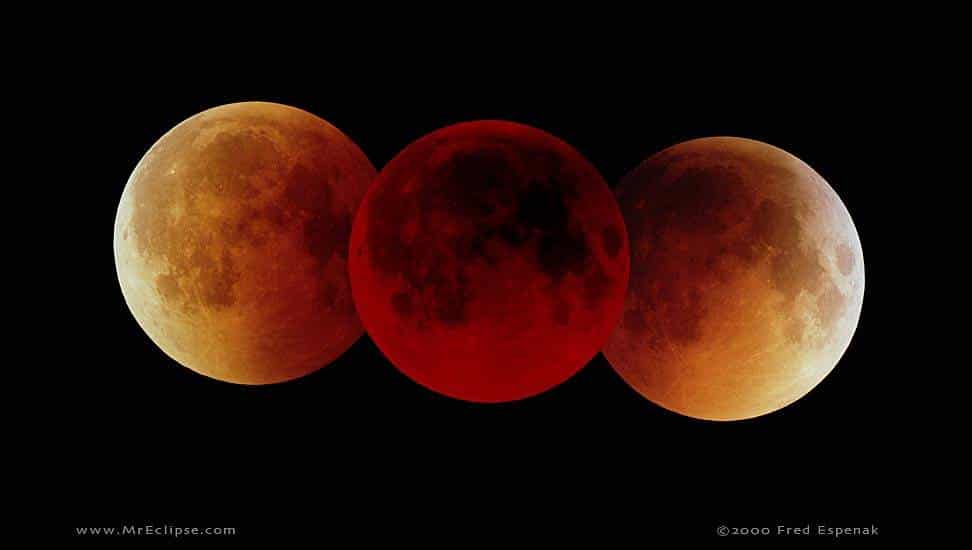
Photo credit: Mreclipse.com
Weather permitting, you can experience full moon and total lunar eclipse on January 20 – 21, 2019. Unlike last year’s eclipse, you are able to see the eclipse irrespective of your location in Canada.
A lunar eclipse occurs when the sun, earth, and moon line up with Earth in the middle and Earth’s shadow passes over the moon.
WHEN IS THE LUNAR ECLIPSE
Date: January 20 – 21, 2019
Depending on your location in Canada, you can watch the eclipse on Sunday evening, January 20 or early Monday morning of January 21.
Lunar Eclipse in Eastern Standard Time:
Penumbral Eclipse begins at 9:36 p.m.
Partial eclipse begins at 10:34p.m.
Total eclipse begins at 11:41 p.m.
Greatest (maximum) eclipse at 12:12 a.m.
Total eclipse ends at 12:43 a.m.
Partial eclipse ends at 1:50 a.m.
Penumbral Eclipse ends at 2:48 a.m.
HOW TO WATCH LUNAR ECLIPSE

Credit: Wikipedia Commons
Unlike solar eclipse, you can watch the lunar eclipse with naked eye – just look up at the moon.
If you live in western Canada, enjoy an astronomy night with your young kids as the maximum eclipse occurs a reasonable hour — 10:12 p.m. MST/9:12 p.m. PST.
The duration of the full eclipse is a little more than an hour starting at 11:41 p.m. EST/8:41 p.m. PST. During this time the moon will turn an orange-red, called BLOOD MOON.
If the sky is clear, visit nearby scenic locations to take beautiful pictures. Don’t forget to take a tripod if you want to take frame-worthy pictures.
Why is the January 20-21, 2019 – a Super Blood Moon:
- The January 2019 lunar eclipse is the second year in a row when Canadians can experience a supermoon lunar eclipse. It is a super moon because the Moon, will appear approximately 14% brighter that usual since the Moon is almost in perigee — closer to Earth in the lunar orbit (Exact perigee on Jan 21, 14:59)
- When the Moon is in the Earth’s shadow, light refracted through Earth’s atmosphere tints the moon red causing a “blood moon”. During a total lunar eclipse, some sunlight still reaches the moon after it goes through Earth’s atmosphere. The blue portion of suns white light reaching the Earth gets absorbed and then scattered. The left over orange- and red-colored light passes gets refracted and projected onto the Moon, causing the reddish-orange coloured moon.
SPECIAL EVENTS
Check with your local RASC chapters.
- Rothney Astrophysical Observatory in Calgary is holding a Lunar Eclipse viewing event on January 20. Admission by donation.
- The H.R. MacMillan Space Centre observatory in Vancouver will be open so you can check out the Moon up close through the telescope. If it is a rainy night there will be a live feed of the eclipse in the Planetarium Star Theatre. January 20, 2019 – 6:30pm to 10:00pm. Adult: $14, Child: $8.50
Youth/Senior $11, Family (5 persons; 2 adults maximum): $41